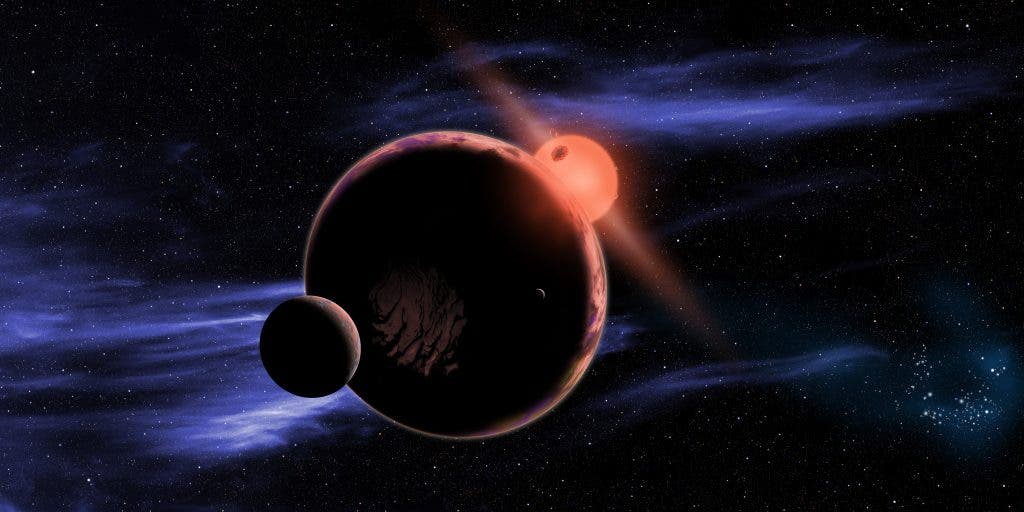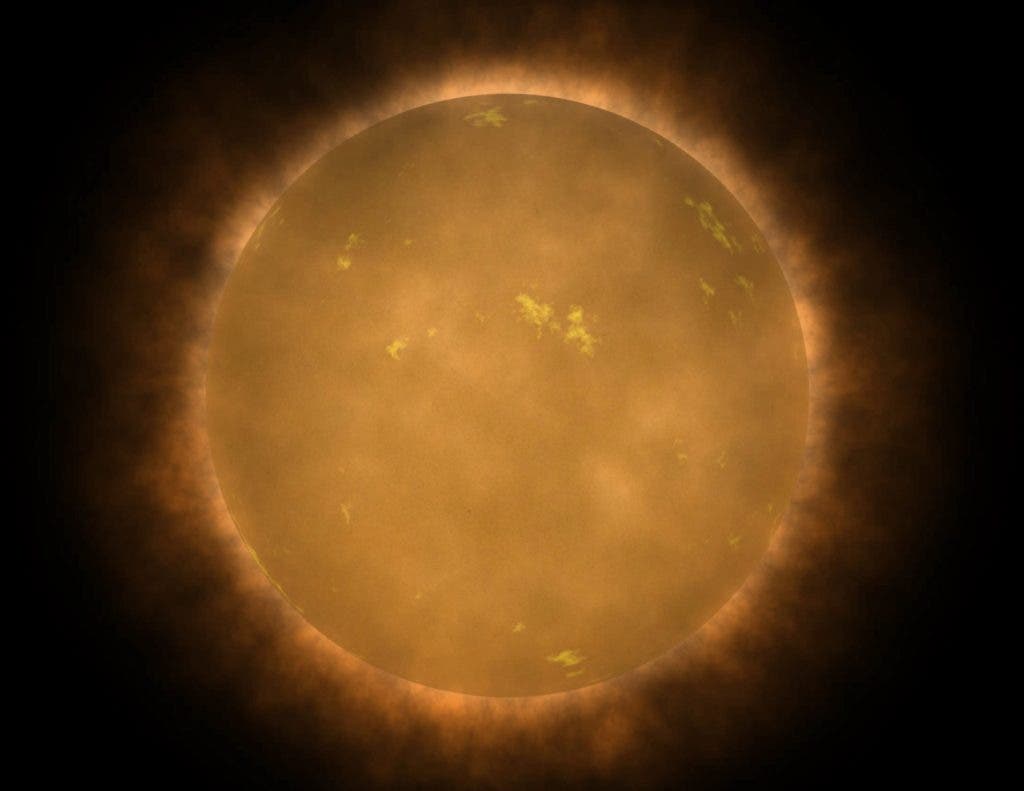
An artist’s impression of a planet with two exomoons orbiting in the habitable zone of a red dwarf. Credit: NASA // Wikimedia Commons
In our very own galaxy, there are up to 400 billion stars and around 100 billion planets, out of which an estimated 40 billion Earth-like exoplanets should be orbiting sun-like stars or red dwarfs in a habitable zone. Faced with this sort of numbers for only for one galaxy — our own — many scholars naturally assert that Earth ought not to be the sole life-bearing planet out there. Yet, for better or worse, our giant radio telescopes haven’t picked up any artificial alien signals. Faced with such uncertainties, scientists nowadays are going wild with all sorts of educated assumptions and hypotheses in an effort to unravel this existential dilemma.
A head start
While previous research seems to indicate the chances of Earth being the only place in the galaxy capable of fostering life are slim, one team of astronomers and physicists led by Harvard University’s Avi Loeb are exploring an alternate route. Their research concludes that planets orbiting dim stars called red dwarfs are the best place to look for extraterrestrial life. The catch: life shouldn’t spring in these sort of places for another 10 trillion years. For comparison, the universe is thought to be 13.7 billion years old. That’s a lot of waiting time. It follows, that maybe — just maybe — life on Earth is singular, or among the very first.
Red dwarfs are by far the most common stars in the universe, comprising about three-fourths of all stars based on space telescope observations made so far. Red dwarf stars typically have a mass of between 7.5% and 40% of the Sun, and this lower mass means that red dwarfs have a cooler surface temperature than the Sun, typically around 3,500 Kelvin (3,230 degrees Celsius) compared to over 5,750 Kelvin (5,475 degrees Celsius) for the Sun.

Artist’s conception of a red dwarf, the most common type of star in the Sun’s stellar neighborhood, and in the universe. Although termed a red dwarf, the surface temperature of this star would give it an orange hue when viewed from close proximity. Credit: Wikimedia Commons
A potentially habitable planet — meaning it revolves around a stable orbit and can sustain liquid water and an atmosphere — from a red dwarf system thus has to be a lot closer to the energy source (the red dwarf) than an Earth-like planet around a sun-like star. However, red dwarfs can last for up to 1,000 times longer than sun-like stars because they need far less fuel to sustain the nuclear fusion.
Loeb and colleagues calculated the relative formation probability per unit time of habitable Earth-like planets starting from the first stars and continuing to the distant cosmic future. One core assumption was that habitable planets need to sustain “life as we know it” — carbon-based, water-dependent and within a certain temperature range. Then, assuming life is indeed possible to form around red dwarfs, the researchers found that extraterrestrial life is 1,000 times more likely to arise in the distant future than it is today. A very distant future, as outlined earlier.
“That’s surprising,” says Loeb. “It means that life around the sun is probably a bit early.”
“If it turns out that low-mass stars are able to support life, then we are special because we are one of the early forms of life,” Loeb says.
Whether red dwarfs can host any life whatsoever is still a matter of debate. Because these stars are so dim, potentially habitable planets need to orbit very closely around their red dwarf parents, which might subject them to radiation and solar flares.
The upcoming Transiting Exoplanet Survey Satellite and James Webb Space Telescope could help settle this debate once they become operational and use their spectroscopic instruments to peer into the chemical makeup of plants orbiting red dwarfs. It might take anything from a decade to a couple of decades before this happens, though. Until then, Loeb’s hypothesis is both entertaining and somewhat depressing. No one likes to be the first comer to a party.









